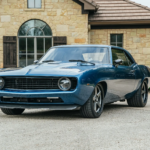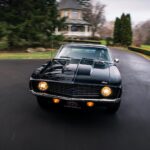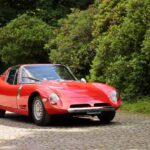In the annals of American automotive history, few cars hold as much iconic status as the 1957 Ford Thunderbird. This classic beauty, often lovingly referred to as the “Baby Bird,” represents a pinnacle of design and style in the mid-20th century. With its distinctive look, powerful V8 engine, and a legacy that has stood the test of time, the 1957 Ford Thunderbird remains a beloved classic and an enduring symbol of American automotive excellence. In this article, we’ll take a journey back in time to explore the history, design, and enduring appeal of the 1957 Ford Thunderbird.
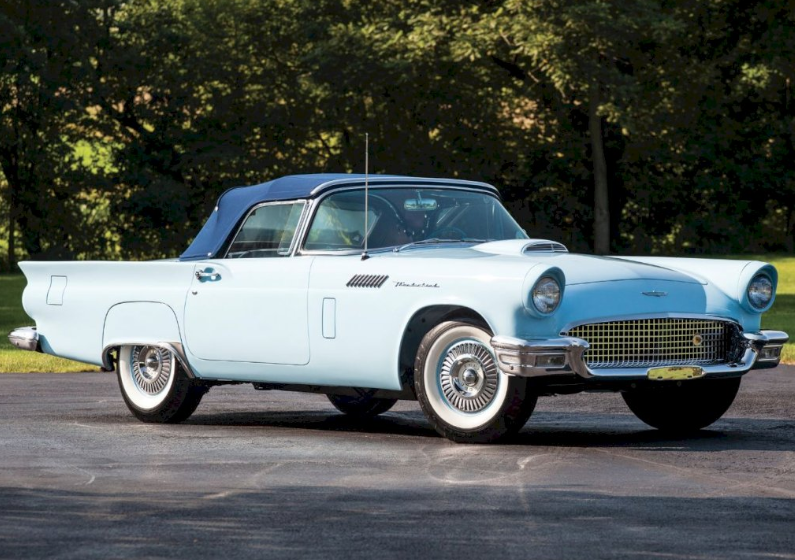
The Birth of the Thunderbird
Ford Motor Company introduced the Thunderbird in 1955 to compete with the Chevrolet Corvette, which had debuted in 1953. At the time, American car buyers were increasingly drawn to smaller, sportier cars-a trend that European automakers, particularly those from the United Kingdom and Italy, had capitalized on with their compact, nimble sports cars. Ford saw an opportunity to create a distinctly American sports car that would appeal to domestic buyers while also establishing Ford as a global player in the burgeoning sports car market.
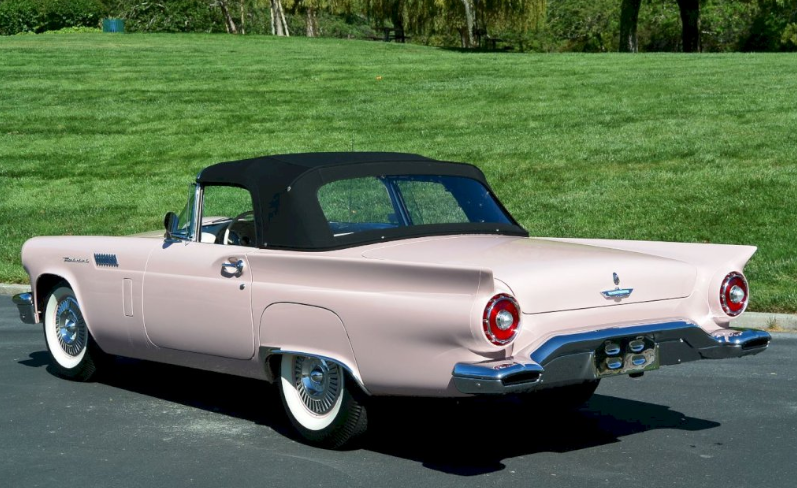
The Thunderbird’s development was overseen by Ford’s then-newly appointed Vice President of Design, George W. Walker, and his team, which included talented designers like Frank Hershey and Joe Oros. Together, they crafted a unique blend of style, performance, and luxury that would define the Thunderbird and set it apart from its competitors.
Design and Styling of the 1957 Ford Thunderbird
The 1957 Thunderbird’s design is a masterful combination of elegance and sportiness, with a sweeping, aerodynamic profile that is both eye-catching and functional. The car’s front end is characterized by a bold, chromed grille flanked by twin round headlamps, creating an aggressive yet refined appearance. The hood features a prominent power bulge, hinting at the potent engine beneath.
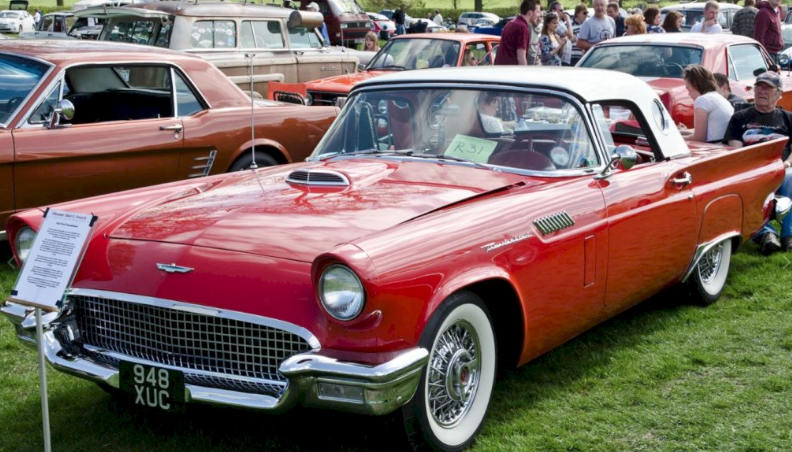
The Thunderbird’s sides are adorned with subtly curved fender lines that flow from the front wheel arches to the rear, along with a distinctive chrome side trim that visually connects the front and rear fenders. On the rear, the 1957 model introduced modest tail fins, a design element that would become a hallmark of American cars in the late 1950s. The rear also features sleek, elongated tail lamps and a chrome bumper with integrated exhaust outlets, further enhancing the car’s sporty appearance.

One of the most notable changes for the 1957 Thunderbird was the addition of a longer rear deck, which not only improved the car’s proportions but also provided additional luggage space. This modification was made in response to customer feedback, as many found the storage capacity of the earlier models to be insufficient for long trips. The 1957 Thunderbird was available with a variety of top options, including a removable hardtop with distinctive porthole windows, a folding soft top, or the option to have both.
Interior and Luxury Features
The interior of the 1957 Thunderbird is a study in luxury and comfort, with a cockpit-inspired design that wraps around the driver and passenger. The dashboard features a full suite of gauges, including a large circular speedometer and tachometer, as well as smaller gauges for fuel, oil pressure, temperature, and battery charge. The steering wheel is large and features a chrome horn ring, while the floor-mounted shifter is within easy reach of the driver.
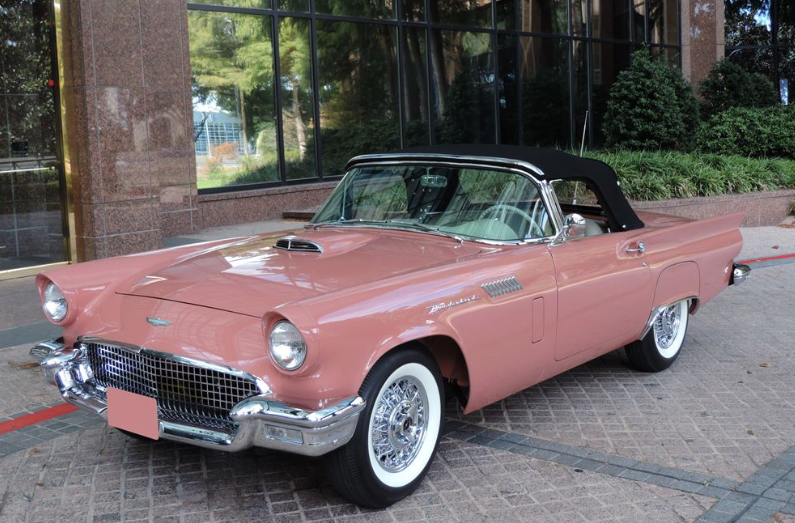
The seats in the 1957 T-Bird are plush and supportive, upholstered in high-quality materials like leather or vinyl, depending on the trim level. Door panels and other interior surfaces are adorned with chrome accents and richly textured materials, creating an upscale atmosphere. The car also features a variety of amenities and options, such as power windows, power seats, a radio, and air conditioning, which were considered quite luxurious for the time.
Performance and Powertrain
The 1957 Ford Thunderbird was not only stylish but also a strong performer. Under the hood, buyers could choose from two V8 engine options: a 292-cubic-inch (4.8-liter) Y-block V8 producing 212 horsepower, or a more powerful 312-cubic-inch (5.1-liter) Y-block V8 that generated 245 horsepower in its standard configuration. An optional “E-code” package for the 312 V8 added dual four-barrel carburetors, increasing output to an impressive 270 horsepower, while the rare “F-code” package added a Paxton-McCulloch supercharger, boosting power to a remarkable 300 horsepower.
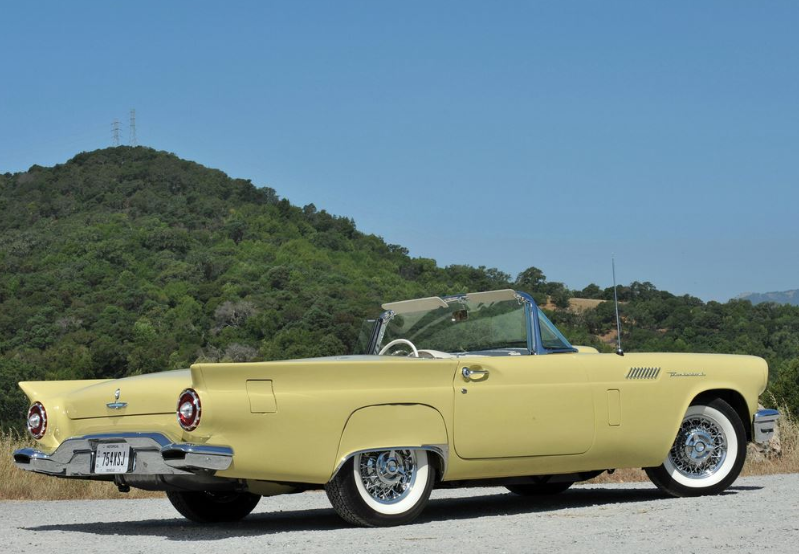
The engines were mated to a choice of three transmissions: a standard three-speed manual, an optional three-speed manual with overdrive, or a smooth-shifting Ford-O-Matic three-speed automatic. With its potent powertrain and relatively lightweight construction, the 1957 Thunderbird was capable of brisk acceleration and a top speed in excess of 120 miles per hour, making it a true performance car of itstime.
Handling and Suspension
The Thunderbird’s handling was engineered to provide a balance between sporty performance and comfortable cruising. The car featured a sturdy ladder frame with a double-wishbone front suspension and a live rear axle supported by leaf springs. Hydraulic shock absorbers and coil springs on all four corners helped to deliver a smooth, controlled ride. Steering was provided by a recirculating ball system, which offered precise control and good road feedback.
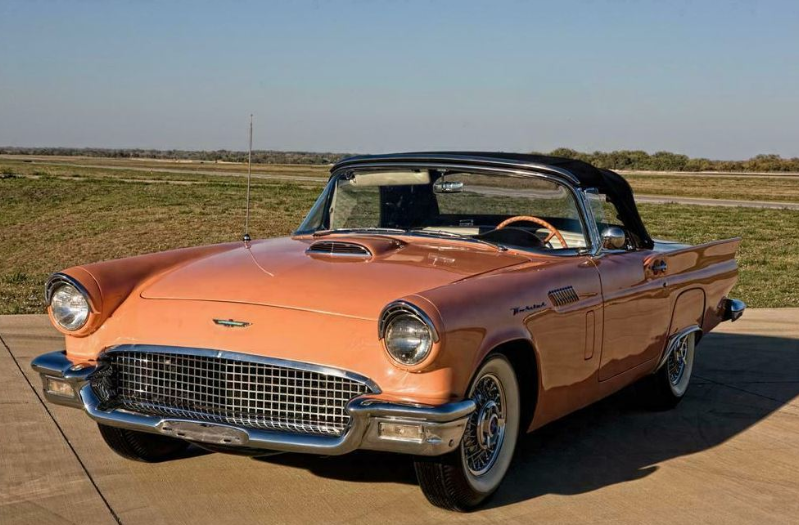
The 1957 Thunderbird was equipped with four-wheel drum brakes, which were the industry standard at the time. While not as advanced as the disc brakes that would become more common in the following decade, the drum brakes provided sufficient stopping power for the car’s weight and performance capabilities.
Production and Sales
The 1957 Ford Thunderbird was well received by the public and the automotive press, with many praising its combination of style, luxury, and performance. Ford produced a total of 21,380 Thunderbirds for the 1957 model year, making it the most popular of the first-generation models. However, despite its success, Ford decided to discontinue the two-seater Thunderbird after 1957, opting to introduce a larger, four-seat version for 1958 in an effort to broaden the car’s appeal and increase sales.
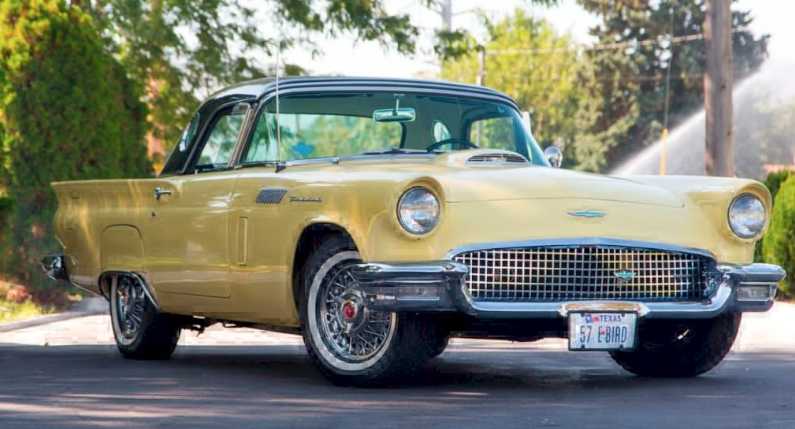
Legacy and Collectibility
The first-generation Ford Thunderbird, and particularly the 1957 model, remains a highly sought-after collectible among classic car enthusiasts. Its distinctive design, powerful performance, and luxury features have solidified its status as an American automotive icon. Pristine examples of the 1957 Thunderbird can command high prices at auctions and in private sales, with rare, high-performance “E-code” and “F-code” models being especially valuable.The Thunderbird’s legacy lives on through the various generations of the model that followed, although none quite captured the magic of the original two-seater roadster. The first-generation Thunderbird’s influence can still be seen in modern automotive design, with many cars featuring styling cues reminiscent of the T-Bird’s iconic shape.
The 1957 Ford Thunderbird represents a unique chapter in American automotive history, capturing the adventurous spirit and optimism of the post-World War II era. Its blend of style, performance, and luxury made it a standout among its contemporaries and has ensured its enduring appeal among collectors and enthusiasts. As a testament to the golden age of American cars, the 1957 Thunderbird continues to captivate and inspire, reminding us of a time when the open road beckoned and the possibilities seemed endless.

